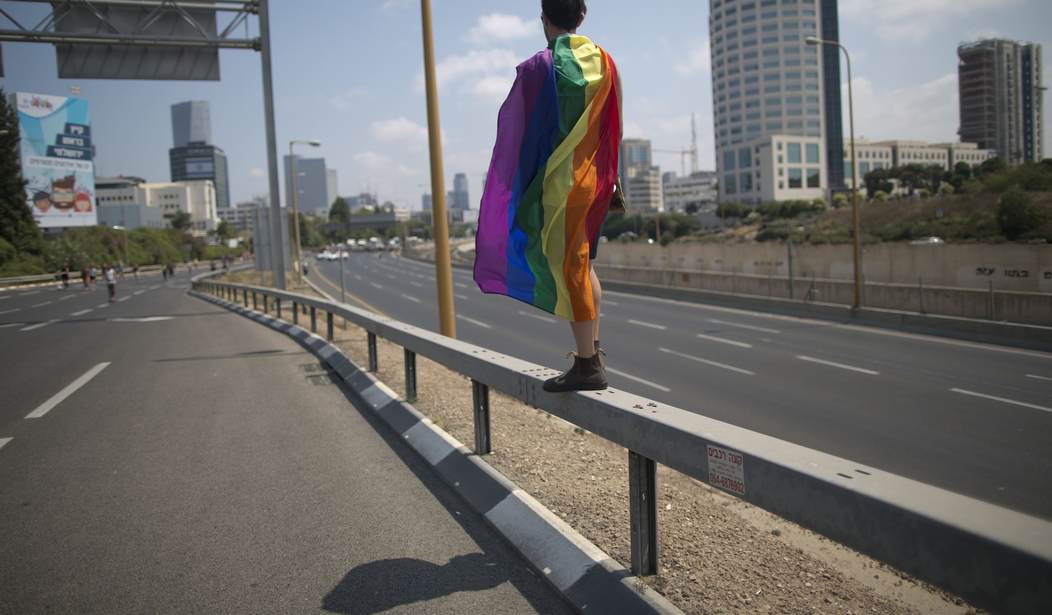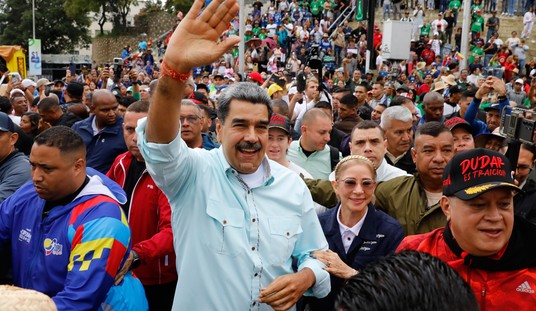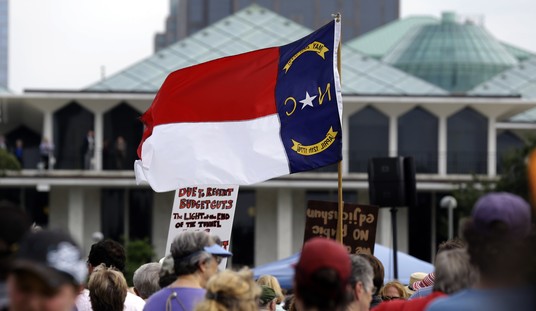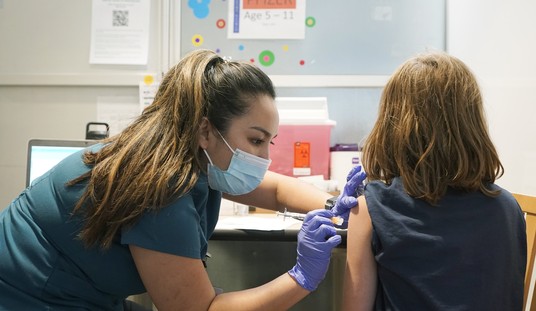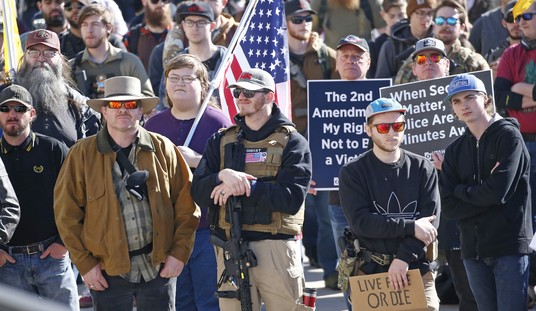This is going to be something of a rant instead of an analytical piece.
Lately, you’ll notice I’ve been writing about the left’s attempts to appropriate the works of J.R.R. Tolkien in order to push their racial and sexual agenda.
(READ: The Left Isn’t Just Attacking Tolkien, It’s Attacking the West)
This appropriation involves everything from pushing the idea that transgendered people lived in Gondor, that Saruman was gay, and that orcs were just allegories for Black and Asian people.
It’s all an attempt to frame Tolkien’s work into a certain context for younger Americans so that when the new Amazon Lord of the Rings series comes out, they’ll view Tolkien’s work through the left’s social justice lens instead of the lens Tolkien intended people to view it through.
There’s still a massive issue for the left in the fact that Peter Jackson’s original Lord of the Rings trilogy was made well before today’s woke brigades found their momentum in the entertainment industry. Now, they have to recontextualize that series by introducing weird concepts of sexuality into moments in the story.
For instance, this article was released from Polygon.
With Boromir’s tender death in Lord of the Rings: Fellowship of the Ring, Peter Jackson sold a brotherly kiss to an audience allergic to male intimacy and revived a style of soft masculinity https://t.co/APCUMgrTbo pic.twitter.com/Zklr9UmEBH
— Polygon (@Polygon) June 24, 2021
Just from the tweet above, you can tell something is off. If you’ll allow me to get nerdy for a second…
For one, Boromir didn’t have a tender death. It was a heroic death, but not tender. Boromir was hit with multiple orcish arrows while defending Merry and Pippin and died listening to Aragorn’s vow that he’ll protect Gondor before calling him his brother. It was a tragic moment and one that served to solidify Aragorn’s resolve.
In the article written by Zev Chevat, he highlights the moment Boromir dies and Aragorn, in a moment of sorrow and brotherly love, kisses Boromir’s brow:
When Aragorn finds him, Boromir sobs, confessing that he tried to take the Ring from Frodo, and that he fears the worst. Aragorn helps Boromir bring his sword to his chest, giving him the repose of a warrior slain in battle. And then, in an intimately framed shot, Aragorn cradles his fallen companion’s face, and kisses his brow.
The article goes on to talk about the “tender masculinity” displayed by these famed literary warriors, but as usual, within the article, you can find the real reason for talking about it:
While there are many reasons for the shifts in masculine representation coming out of the 20th century, one seems the most glaring and obvious. A shadow and a threat to the mainstream had been growing in Hollywood’s mind for decades: homosexuality. As awareness of queer existence rose in the cishet public consciousness — owing in no small part to the AIDS crisis of the 1980s and 1990s, and the increasing visibility of queer activism — Hollywood became more and more skittish about representing closeness, physical touch, and emotional vulnerability between male characters.
The box-office-topping action movies from the years around Fellowship’s release — including the first installment of the Fast and the Furious franchise, the first of the Raimi Spider-Man films, and The Mummy Returns — give an overview of how adult masculinity existed in the popular consciousness. Masculinity meant male heroism, and the heroism of a solitary man. He might be the de facto leader of a team, but if he had equals, they were coded as antagonists, rivals, or at the very least, sources of gruff, in-group tension. The hero probably had a female love interest (likely to be the only top billed woman), but no close male friends with whom he shared his interior life, and certainly none who he’d touch for longer than a fist takes to make contact.
In short, the gripe is that homophobia had caused the male action hero to become solitary and resistant to the idea of men bonding on a deeper level than fist-bump buddies. This is, of course, demonstrably false. Anyone can watch Saving Private Ryan, Band of Brothers, Boondock Saints, Sean of the Dead, and even Toy Story, to see moments where brotherly bonds were shown to be more than just solitary men doing badass things at arm’s reach.
Reading this, you have to wonder who this article is for. At no point have men looked at moments like the one Aragorn and Boromir had and become uncomfortable. I don’t know a single man in my life who watched a scene of a soldier holding his dying friend and crying over his passing and thought “wow, what a couple of fruits.”
Men aren’t so averse to male bonding that we see homosexuality around every turn. It’s easy to spot the difference between two men who have a bond and two men who are sexually attracted to each other.
It only seems to be the left who sees these things and instantly feels the need to refer, in some way, to the sexual aspect of things. They can’t get past it. Even Aragorn holding Boromir’s hand without the kiss would have been enough for some on the left to claim that they two had some sort of attraction there.
To give you a more recent example, a few years ago there was a very large push to make Steve Rogers (Captain America) and Bucky Barnes (The Winter Soldier) a couple, strictly because it was clear that the two had a strong bond with one another. As I wrote at the time, many of the people calling for this to happen weren’t even Captain America fans, they just demanded that the two have a sexual relationship with one another. Moreover, it wasn’t just internet activists. The call was picked up by big-time publications like the LA Times and Time Magazine.
No one sees sex in male bonding except those on the left with an agenda to push, and it’s sad that they control so much of the entertainment complex that they can push this ludicrous fetishization on everyone else. What’s more, they complain the world is rife with homophobia in the event they don’t get what they want, creating a ridiculous narrative that we need more homosexuality in our culture so that this “hatred” disappears in a puff of gay normalization.
Again, who is this for? No one is struggling with sexuality except them. No one needs to introduce it into every event in order to feel complete. Only they do. They need this obsession with sex and homosexuality to be normalized.
Here’s the kicker, though…it’s not. Homosexuality is not the norm despite cultural attempts to make it seem like it is. The number of people who are actually gay (and I don’t mean the people who claim they are because it’s trendy) in this country is in the single-digit percentage. Around four percent to be precise.
Mainstream culture wants us to view this four percent as representatives of our greater society, but they aren’t. We don’t have their struggles. We don’t need to wrestle with the questions and troubles that they do. We don’t need to see sex and sexuality displayed at every turn.
They do. It’s insecurity they can’t get past and it’s becoming a burden on the rest of us in the form of destroying and perverting the works of better people than them.

